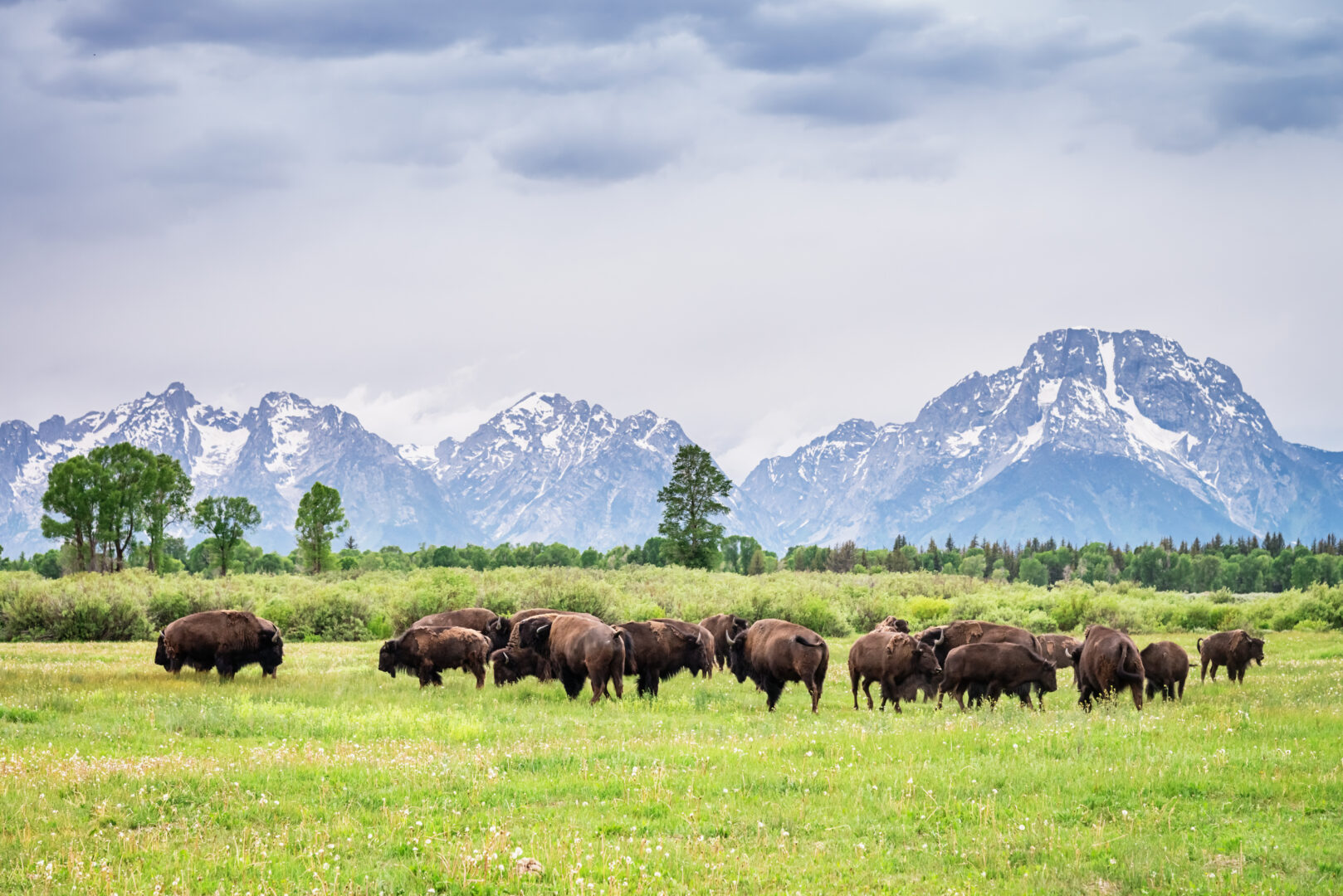
Herd of Wild Buffalos on a green meadow in front of the majestic and snow-covered Teton range. Grand Teton National Park, Wyoming, USA.

Herd of Wild Buffalos on a green meadow in front of the majestic and snow-covered Teton range. Grand Teton National Park, Wyoming, USA.

Herd of Wild Buffalos on a green meadow in front of the majestic and snow-covered Teton range. Grand Teton National Park, Wyoming, USA.
Airdate: October 3rd, 2023
Renowned filmmaker Ken Burns’ latest documentary is called The American Buffalo.
It will air on WITF-TV and PBS October 16th and 17th , but there will be a special preview screening this Thursday, October 5th at 5 pm at the Willow Valley Communities Cultural Center in Willow Street, Lancaster County.
The American Buffalo traces the importance of the buffalo to indigenous people and how the buffalo was all but wiped out in the late 19th Century. The loss of Native Americans’ major source of food, clothing, shelter and an important part of their religion contributed to the loss of their way of life.
Joining us on The Spark Tuesday were two of the panelists who will join us Thursday night after the preview screening: Sandi Cianciulli, who hails from the Oglala Sioux Nation and is a member of the National Congress of American Indians and served on the White House Committee, Urban Indian Coalition and Dr. Marlene Arnold, Professor of Anthropology and Director of the Providence Project at Millersville University.
Cianciulli was asked about the importance of the buffalo in American Indian culture,”Indian people look at all of life differently than of the European model. They. They consider the earth. They’re their mother. They consider the sky their father. They consider the trees and the wings and the four legged — all relatives because we’re all in this together. We’re all on this earth at a period of time together and we share it and we share with each other. And what the buffalo did was give of themselves so that the native communities could survive. So it was there. They considered it their relative, the word for it.”
The buffalo even played a part in religion but the white buffalo was especially meaningful as Cianciulli pointed out,”It’s like a sign of better times coming. I’m very saturated and entrenched in contemporary native communities and not much we can do about history, but there’s always something we can do about the future and looking out for the best interests of Native people. When the White Buffalo was born, it was inspiring. It was a sign that things would get better for the native communities and that was. Anything that can interject hope.”
Watch the trailer to The American Buffalo here.
Dr. Arnold said the Burns film may go a long way toward helping Americans understand how destruction of the buffalo by the U.S. Army, government sponsored hunts and hunters was the downfall of much of Native people in this country,”Native people weren’t really in contact directly with Europeans before Lewis and Clark in 1805, but even jump to between 1840 and 1890 in the span of 50 years. The real connection with Europeans just starting in 1840. But within 50 years, all of those native cultures were under such destruction and attack. And really, by 1890, it’s considered the death of Plains Indian culture, although, of course, many of those cultures survived. But their way of life of the 19th century and earlier was quite destroyed through destroying the buffalo. So those 60 million buffalo, by 1902 there were 100, only 100 buffalo in the wild. So this destruction of the buffalo went hand-in-hand with the destruction of many Native American people and attacks against their culture. I think if Americans understood this piece of history, it would really help toward setting in motion healing for this destruction against native people.”
Cianciulli summed up what the loss of the buffalo meant to Native Americans,”I asked my father one time what was the hardest thing about growing up in abject poverty? And he said, being hungry. And not being able to do anything about it. And it kind of affected, impacted his whole life. Everywhere we moved, he would build shelves. And with the last nail, he would pound it in so hard. And he was a big, strong guy. I don’t know how they didn’t all fall apart, but my mother would have to fill them up with food in order for him to feel secure. I only use that as an example because I can’t imagine myself. What it must be like to have everything you ever knew collapse. In your lifetime, and then you have to figure out how to. How to live. You wake up every morning, What do I do now? And that’s a position that there’s still. What do I do now?”
The days of journalism’s one-way street of simply producing stories for the public have long been over. Now, it’s time to find better ways to interact with you and ensure we meet your high standards of what a credible media organization should be.